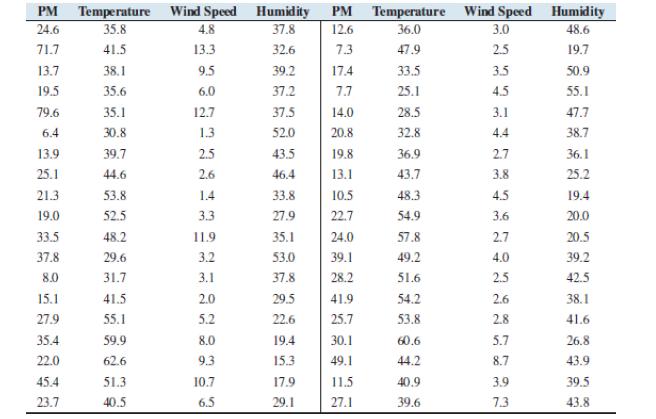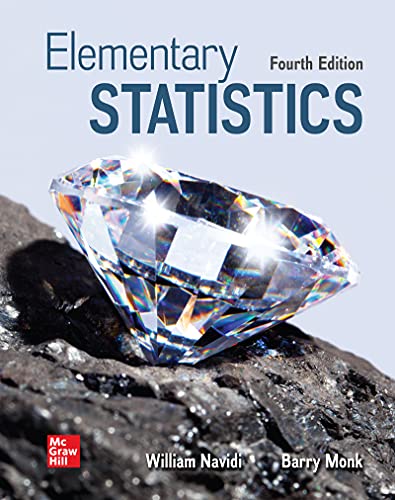Air pollution: Following are measurements of particulate matter (PM) concentration (in micrograms per cubic meter), temperature, in
Question:
Air pollution: Following are measurements of particulate matter (PM)
concentration (in micrograms per cubic meter), temperature, in degrees Fahrenheit, wind speed in miles per hour, and humidity in percent for 38 days in Denver, Colorado.
a. Let y represent PM, x1 represent temperature, x2 represent wind speed, and x3 represent humidity. Construct the multiple regression equation![]()
b. Predict the particulate concentration on a day where the temperature is 40 degrees, the wind speed is 5 miles per hour, and the humidity is 30 percent.
c. Refer to part (b). Construct a 95% confidence interval for the particulate concentration.
d. Refer to part (b). Construct a 95% prediction interval for the particulate concentration.
e. Are all the values in the prediction interval reasonable? Explain.
f. What percentage of the variation in particulate concentration is explained by the model?
g. Is the model useful for prediction? Why or why not? Use the α = 0.05 level.
h. Test H0: β1 = 0 versus H1: β1 ≠ 0 at the α = 0.05 level. Can you reject H0? Repeat for β2 and β3.
Step by Step Answer:






